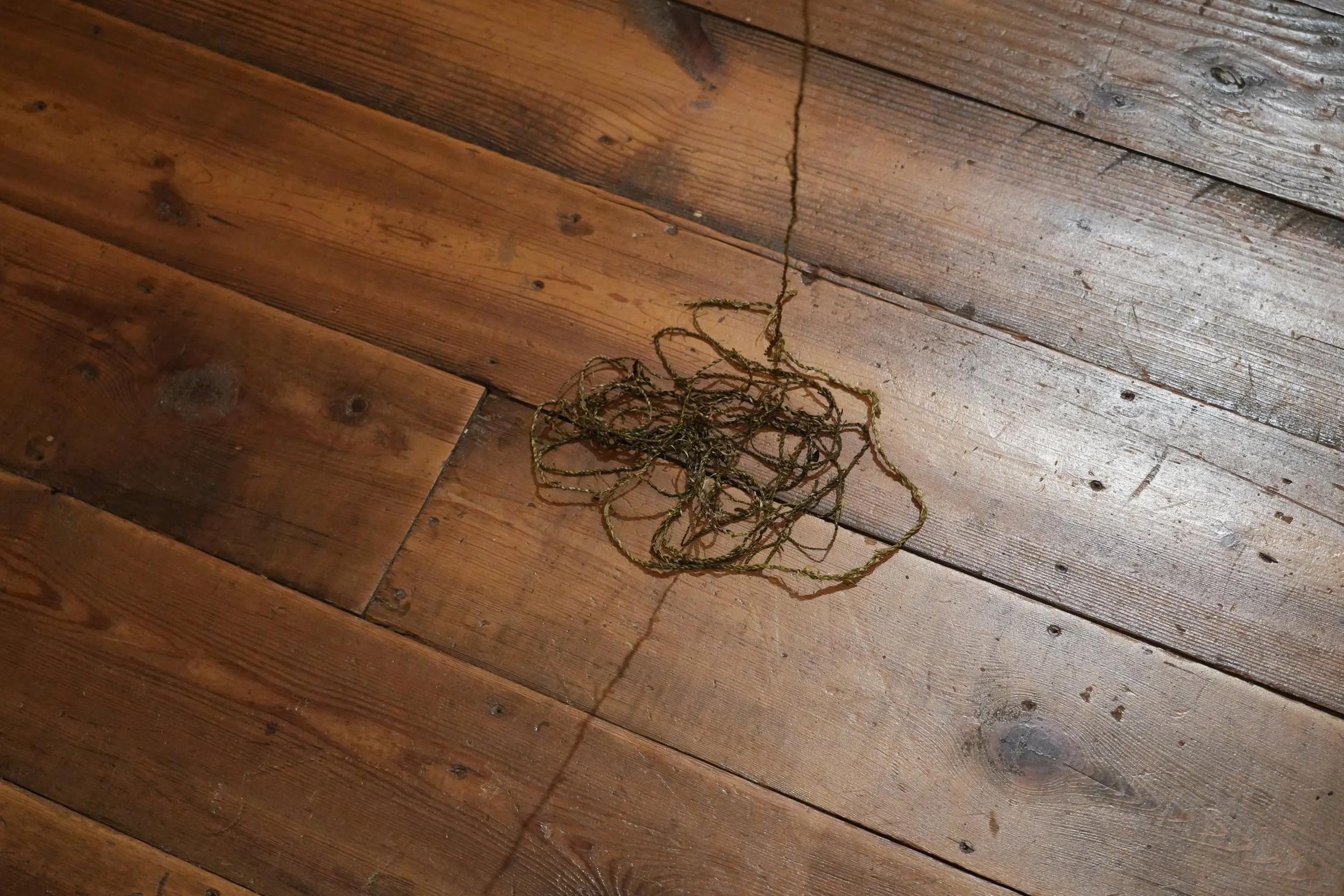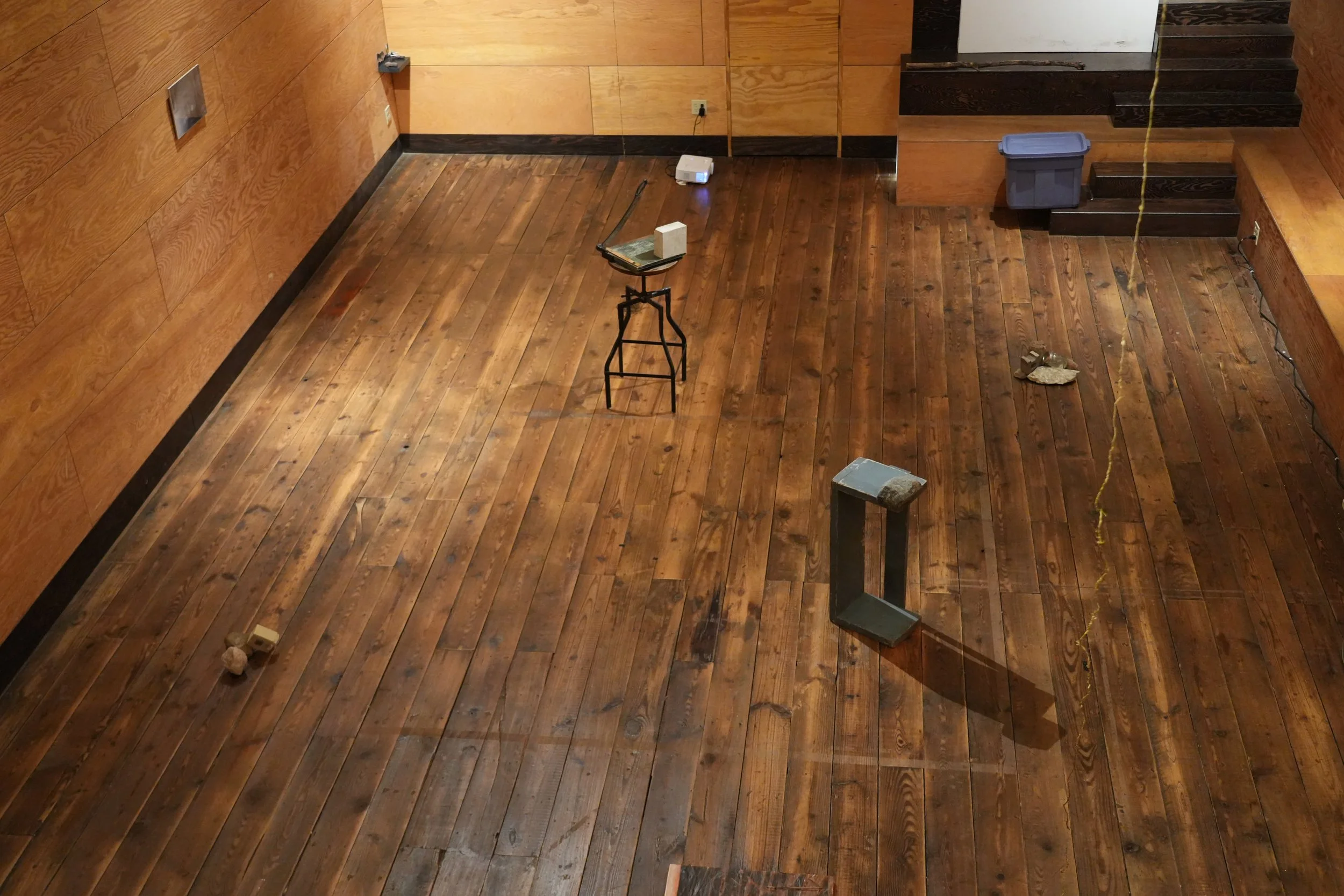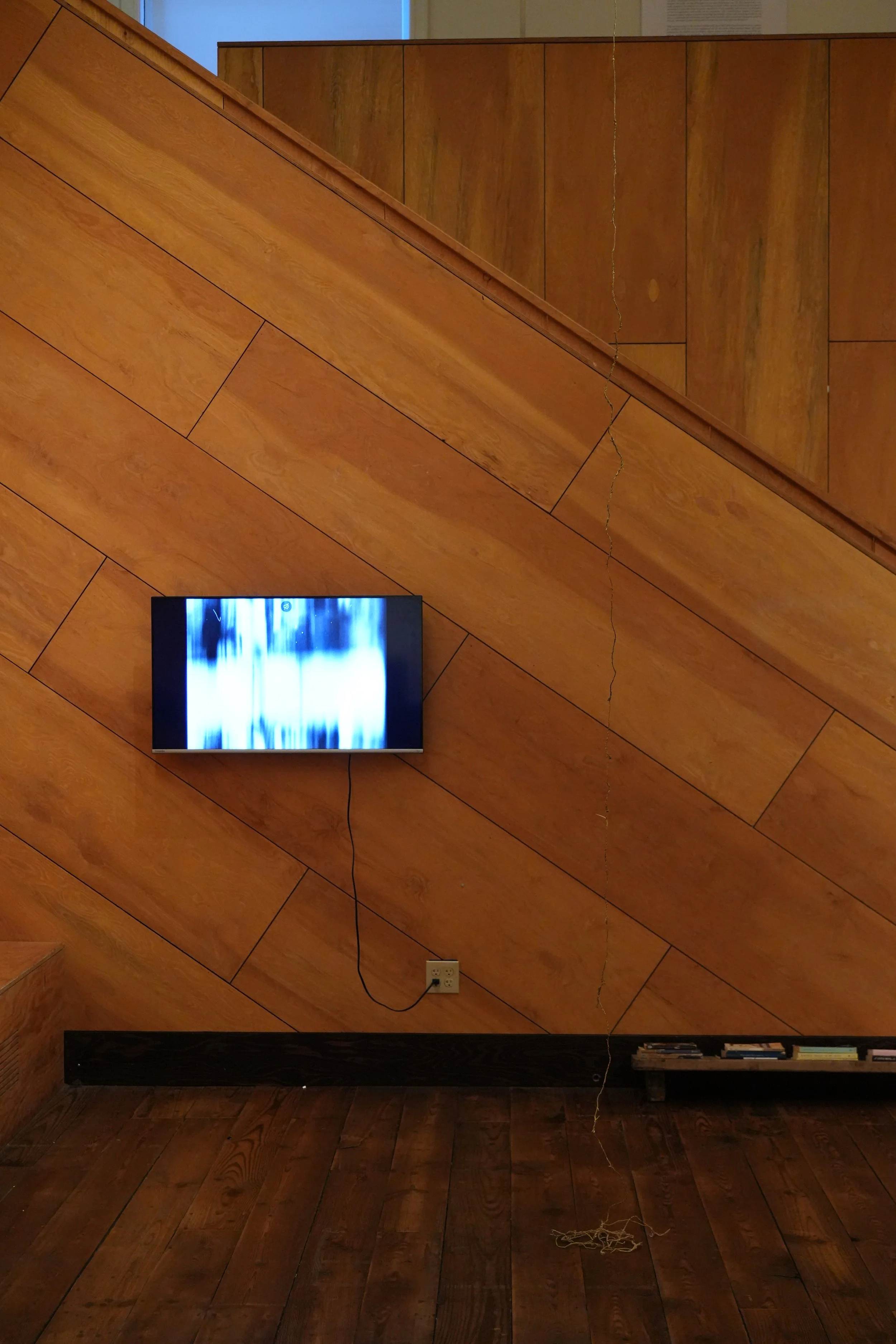Cordage- black mustard (brassica nigra, invasive to california) & tree of heaven (ailanthus altissima, invasive to illinois)
From Under the Sun, As It Were. Curated by Evan Fusco. Exhibited at Watershed Art and Ecology. Chicago, IL.
2025
Western approaches to restoration perpetuate the idea of selective removal, focusing on singular invasive species rather than the ecosystem as a whole. As we cross borders and intertwine cultural lines, we carry the seeds of our ancestral heritages–sometimes intentionally, and other times accidentally– thus shaping our ecosystems. Though invasive species cause many harms, they become our siblings as they are braided into the land, growing through cracks in sidewalks and blanketing hillsides.
Eradication without connection is a practice of extraction– alienating specific beings, deeming them as “invaders,” and preventing any possibility for relationship.
The cordage, one of humanity’s most ancient technologies, is made from invasive plants harvested in Illinois and California, representing a new paradigm: to bind together multiple strands of history, connecting our ancestral past with the territories we settle in.
The strength of the cordage is determined by the tension of the fibers, held together only by each other. By including invasive species in the cordage, we invert the current practice of selective removal, suggesting we face the challenge of these new plants as part of what weaves us together.





